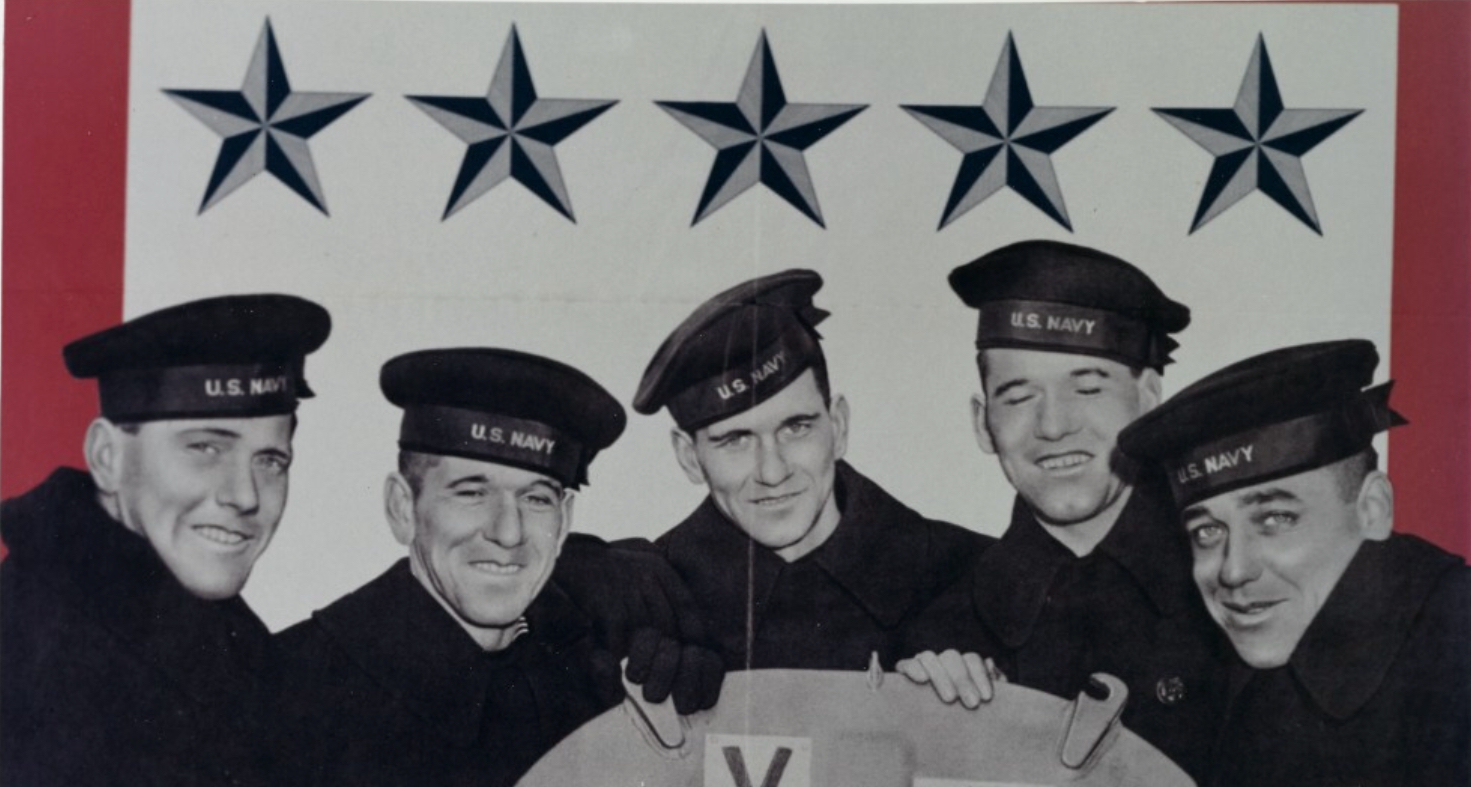
Of the many stories written into America’s war book, few are as heavy with significance and emotional weight as the Sullivan brothers of Waterloo, Iowa. What happened to George, Frank, Joe, Matt, and Al Sullivan in World War II is more than a chapter of history — it is an intensely personal, tragic one of love, sacrifice, and national conscience. Their tragic loss remains the greatest single combat fatality of a single family in United States military history, an occasion that has forever changed how the country views service and sacrifice.

Throughout the hard times of the Great Depression, the Sullivan brothers rose from a hardworking Irish-American family with strong values. Their parents, Thomas and Alleta, were practical, no-nonsense folks who fought to survive, raising their children in a solid grounding of faith, harmony, and devotion. The brothers were bosom buddies—so close that they worked opposite shifts at the local meatpacking plant, played on the same ball teams, and stuck together wherever life took them. Their motto, “we stick together,” wasn’t something they said—something they lived.

December 7, 1941, dawned. The Pearl Harbor attack changed not only the course of the war but also everything for the Sullivans. One of their friends, Bill Ball, had died aboard the USS Arizona. That was enough for the brothers. All five of them went in together to enlist in the Navy—but with one condition: they would not serve apart. Despite the Navy’s usual practice of not sending siblings on the same ship, their request was granted. All five were dispatched aboard the light cruiser USS Juneau.

The Juneau was soon thrust into the fury of the Pacific as part of American forces in the bloody Guadalcanal Campaign. On 13 November 1942, the ship was struck by a Japanese torpedo. When it tried to retreat later in the day, the submarine I-26 sank the cruiser with devastating firepower. In less than a minute, the Juneau broke apart and slipped beneath the waves of the sea. Of the nearly 700 crewmen on board, only 10 survived ultimately, hanging by their fingernails for days adrift in the open ocean, fighting to survive from wounds, dehydration, and the ever-present threat of shark attacks.

What happened to the Sullivans afterwards was every bit as horrific as it was tragic. Survivor accounts had Frank, Joe, and Matt all dead instantly in the blast. Al hung on a bit longer before dying the next day by drowning. George—worst shaken of them all—hung on a few days, helpless as hope slipped away. Whether through grief, insanity, or both, George was last seen floating away and never to be heard of again. Not all their bodies were recovered. Their names are listed on the Tablets of the Missing in Manila today—a silent testament to lives lost far from home.

At first, news of the loss of the ship had been suppressed, a wartime military custom. But with every passing day of silence, Alleta Sullivan worried. Her sons’ letters stopped coming. She penned a letter to the Navy in January of 1943. The 12th of that month found officers knocking on the modest family door. Thomas, about to head off to work, opened the door to words a parent never should have to hear: “I have some news for you about your boys.” When he inquired, “Which one?” the response was a gut-blow—”All five.” It was a moment of unimaginable grief.

And yet, somehow, the Sullivans did not disappear. Instead, Thomas and Alleta channeled their sorrow into action. They traveled the country, giving public addresses at war bond rallies, shipyards, and factories. Theirs was a simple but adamant message—support the mission, support the troops, and never forget what freedom costs. Their daughter, Genevieve, joined the WAVES, the Navy’s women’s auxiliary, and continued the family message with dignity and grace.

Their story echoed nationally. Soon, the Office of War Information leveraged the Sullivan legacy to rally Americans, reminding folks that what had been sacrificed in war was matched by what was sacrificed at home. A film, The Fighting Sullivans, soon followed. It painted a stark, emotional picture of who and what these brothers were, what they stood for, and what they gave up.

But the most lasting legacy of the Sullivan tragedy came in the form of policy. The military reacted by instituting what came to be called the Sole Survivor Policy. It was a new rule that protected surviving family members from being sent to combat if one sibling had already been killed while serving. It was a compassionate revision directly resultant from the Sullivan family suffering—something done to keep others from suffering the same unimaginable tragedy. Their legacy wasn’t confined to policy, either. President Franklin D. Roosevelt himself wrote to the family, offering condolences on behalf of the country.

Pope Pius XII sent a silver rosary and medal. And the Navy twice honored the brothers by christening two destroyers USS The Sullivans—the first one the only Navy vessel ever to be named after more than one individual. In Waterloo, where the brothers were raised, they are remembered in myriad ways—from a public veterans museum to government facilities, parks, and annual awards bearing their name. In 2018, the Juneau wreckage was at last discovered deep in the South Pacific.

The discovery placed the story back in the news—but to some, Sullivan’s legacy never faltered. Their sacrifice continues to be taught in Navy instruction, military history classes, and monuments nationwide. It’s the story not only of five brave men who served as a crew, but of one family that gave all, and a country that continues to remember. The story of the Sullivan brothers is, in the end, one of commitment, tragedy, and immense courage. It’s a reminder that freedom is bought at the highest cost, and that, with each act of service, there is behind it a family forever changed. Their legacy is in every Gold Star flag, every sailor who recalls their name, and in the prom
